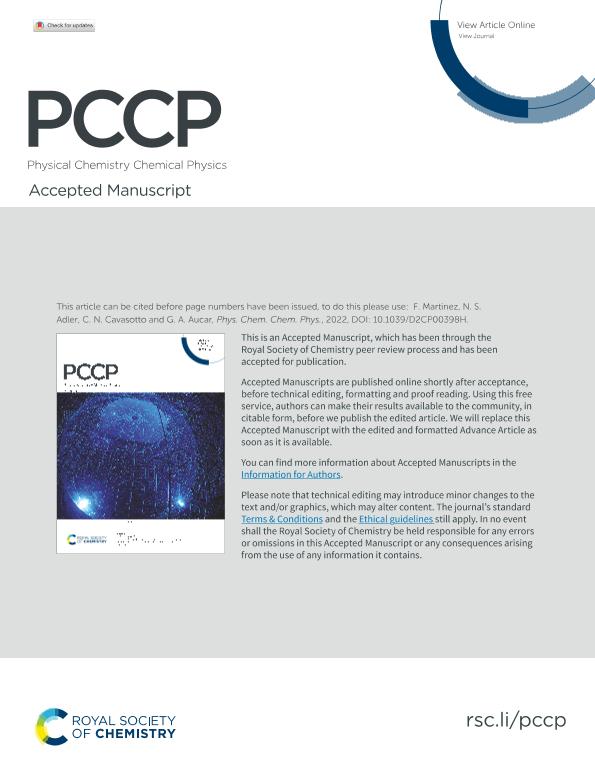Artículo
Solvent effects on the NMR shieldings of stacked DNA base pairs
Fecha de publicación:
07/2022
Editorial:
Royal Society of Chemistry
Revista:
Physical Chemistry Chemical Physics
ISSN:
1463-9076
Idioma:
Inglés
Tipo de recurso:
Artículo publicado
Clasificación temática:
Resumen
Stacking effects are among the most important effects in DNA. We have recently studied their influence in fragments of DNA through the analysis of NMR magnetic shieldings, firstly in vacuo. As a continuation of this line of research we show here the influence of solvent effects on the shieldings through the application of both explicit and implicit models. We found that the explicit solvent model is more appropriate for consideration due to the results matching better in general with experiments, as well as providing clear knowledge of the electronic origin of the value of the shieldings. Our study is grounded on a recently developed theoretical model of our own, by which we are able to learn about the magnetic effects of given fragments of DNA molecules on selected base pairs. We use the shieldings of the atoms of a central base pair (guanine-cytosine) of a selected fragment of DNA molecules as descriptors of physical effects, like π-stacking and solvent effects. They can be taken separately and altogether. The effect of π-stacking is introduced through the addition of some pairs above and below of the central base pair, and now, the solvent effect is considered including a network of water molecules that consist of two solvation layers, which were fixed in the calculations performed in all fragments. We show that the solvent effects enhance the stacking effects on the magnetic shieldings of atoms that belong to the external N-H bonds. The net effect is of deshielding on both atoms. There is also a deshielding effect on the carbon atoms that belong to C 00000000 00000000 00000000 00000000 11111111 00000000 11111111 00000000 00000000 00000000 O bonds, for which the oxygen atom has an explicit hydrogen bond (HB) with a solvent water molecule. Solvent effects are found to be no higher than a few percent of the total value of the shieldings (between 1% and 5%) for most atoms, although there are few for which such an effect can be higher. There is one nitrogen atom, the acceptor of the HB between guanine and cytosine, that is more highly shielded (around 15 ppm or 10%) when the explicit solvent is considered. In a similar manner, the most external nitrogen atom of cytosine and the hydrogen atom that is bonded to it are highly deshielded (around 10 ppm for nitrogen and around 3 ppm for hydrogen).
Palabras clave:
Efectos de solvente
,
RMN
,
Apantallamientos
Archivos asociados
Licencia
Identificadores
Colecciones
Articulos(CIBION)
Articulos de CENTRO DE INVESTIGACIONES EN BIONANOCIENCIAS "ELIZABETH JARES ERIJMAN"
Articulos de CENTRO DE INVESTIGACIONES EN BIONANOCIENCIAS "ELIZABETH JARES ERIJMAN"
Articulos(IIMT)
Articulos de INSTITUTO DE INVESTIGACIONES EN MEDICINA TRASLACIONAL
Articulos de INSTITUTO DE INVESTIGACIONES EN MEDICINA TRASLACIONAL
Articulos(IMIT)
Articulos de INST.DE MODELADO E INNOVACION TECNOLOGICA
Articulos de INST.DE MODELADO E INNOVACION TECNOLOGICA
Citación
Martínez, Fernando Ariel; Adler, Natalia Sol; Cavasotto, Claudio Norberto; Aucar, Gustavo Adolfo; Solvent effects on the NMR shieldings of stacked DNA base pairs; Royal Society of Chemistry; Physical Chemistry Chemical Physics; 24; 30; 7-2022; 18150-18160
Compartir
Altmétricas




